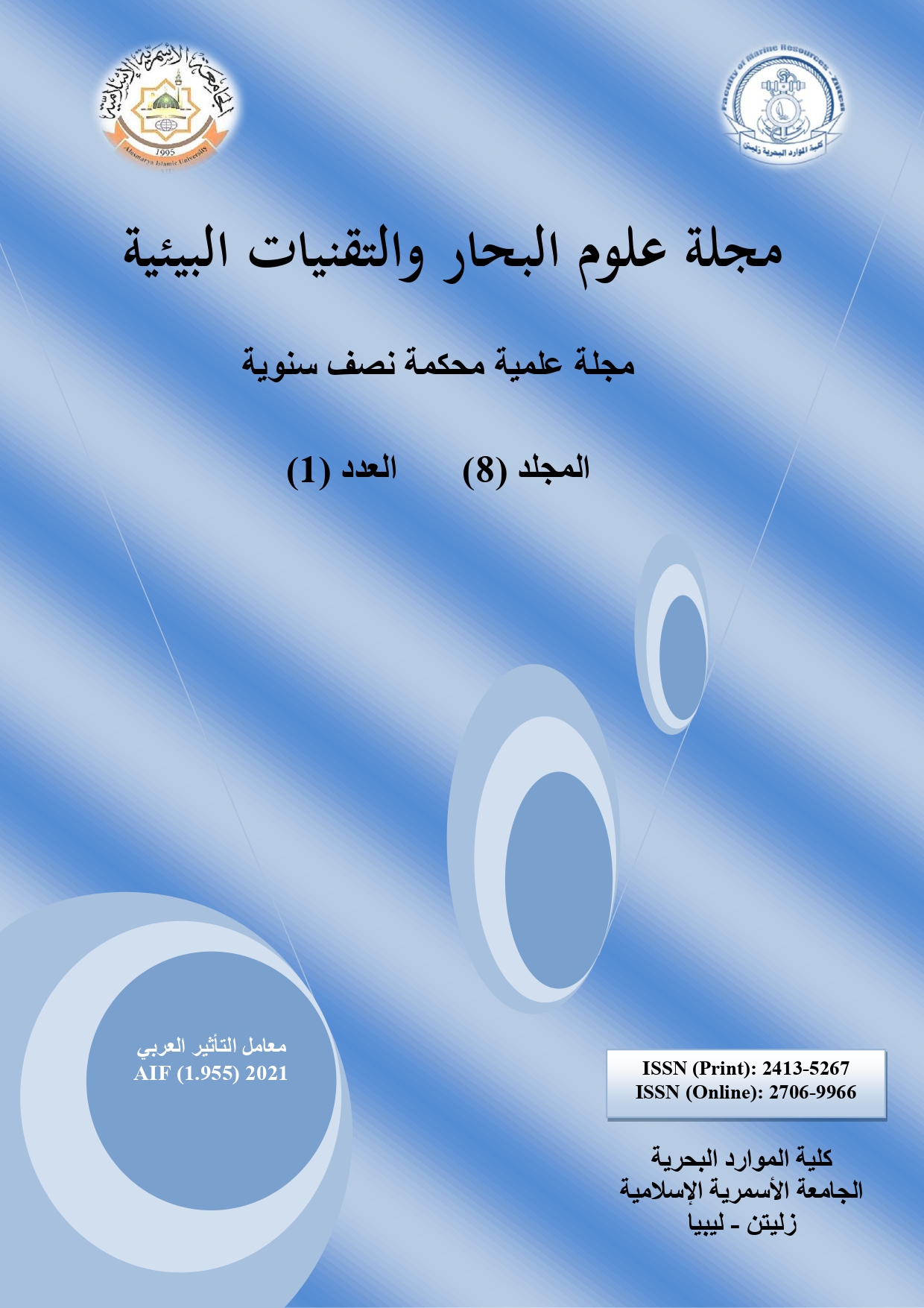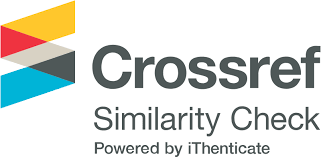مراجعة لظاهرة الكسر البارد في مفاصل لحام الفولاذ عالي المقاومة (أسبابها وعلاجها)
DOI:
https://doi.org/10.59743/jmset.v8i1.8الكلمات المفتاحية:
الكسر البارد، الهيدروجين القابل للانتشار، المنطقة المتأثرة بالحرارة، مارتينسيت، درجة حرارة التسخين المسبقالملخص
هندسة اللحام أصبحت مهمة بشكل أساسي في جميع فروع التصنيع، مثل؛ خطوط أنابيب النفط وصناعة السفن، ومنصات النفط، وصناعة المركبات، وخزانات النفط، والمزيد من التطبيقات. يمكن أن يكون الكسر الناجم عن الهيدروجين المرتبط باللحام مصدر ضرر حقيقي للهياكل الملحومة. بهذه الطريقة قد يكون موضوعًا شائعًا في مثل هذه المجالات وتجنبها مسألة حتمية. قابلية اللحام للفولاذ فيما يتعلق بالكسر البارد تتعلق بصلابة الفولاذ، مما يشير إلى تكوين بنية مجهرية صلبة وهشة. الطريقة المثلى لتفادي وجود مارتينسيت هي تقليل معدل التبريد للمعدن الأم وتسخين المنطقة المتأثرة بالحرارة. هناك العديد من الترتيبات لتجنب المشكلة المشار إليها أعلاه اثنان منها: التسخين المسبق واستخدام كميات الكترودات ذات محتوى أقل من الهيدروجين. يقوم البحث الحالي بمسح عدد من الاستفسارات السابقة واللاحقة والتي يتم تنسيقها من أجل الحصول على فهم أكثر تماسكًا لتأثير متغيرات اللحام على الكسر البارد، مع التركيز بشكل خاص على تأثير تقنية التسخين المسبق ومستوى الهيدروجين القابل للانتشار على الشقوق الباردة لفولاذ مختلف الأنواع. ومن الجدير بالذكر، فإن أحد أهم الاكتشافات الحيوية لهذا التأمل هو أن مقاومة الشقوق التي يسببها الهيدروجين قد تطورت في معظمها في العديد من أنواع الصلب والطرق المطلوبة لتفادي الشقوق الباردة من خلال التحكم في ظروف اللحام تم إعدادها بشكل جيد.
التنزيلات
المراجع
AIT Advanced Inspection Technologies (NDE Services). Detection of hydrogen induced cracking (HIC). Online at: [http://www.aitechnologies.biz/detection_of_hydrogen_induced_cracking-.php].
Bailey N., Coe F.R., Gooch T.G., Hart P.H.M., Jenkins N., & Pargeter R.J. (1993). Welding steels without hydrogen cracking, 2nd Ed., Woodhead Publishing Limited, Cambridge, UK.
Chunyan Y., Xinyi J., Yuan Y., Xiulin J., & Kezhao Z. (2019). Cold cracking susceptibility of X100 pipeline steel. CHINA WELDING, 28(3): 25-33.
Davis J.R. (1996). Carbon and alloy steels. ASM International, Member/Customer Service Center, Materials Park, OH, USA, 731.
Dinovitzer A., Graville B., Glover A., & Pussegoda N. (2000). Multi-pass weld hydrogen management to prevent delayed cracking. In: International Pipeline Conference, October 1-5, Calgary, Alberta Canada. Vol. 40245: V001T02A01.
El‐Batahgy A.M. (1994). A study on cold cracking susceptibility in high strength steel fillet weld joints. Steel Research, 65(12): 551-555.
Funderburk R.S. (2000). Taking your weld's temperature. In: American Institute of Steel Construction, Inc, 2000 North American Steel Construction Conference (NASCC) Proceedings (USA), p. 14.
Hassan A. (2017). Effects of Preheating Temperature on Cold Cracks, Microstructures and Properties of HSLA Steel). Materials Science.
Hu L.H., Huang J., Li Z.G., & Wu Y.X. (2011). Effects of preheating temperature on cold cracks, microstructures and properties of high power laser hybrid welded 10Ni3CrMoV steel. Materials & Design, 32(4): 1931-1939.
Klett J., Mattos I.B., Maier H.J., Silva R.H., & Hassel T. (2021). Control of the diffusible hydrogen content in different steel phases through the targeted use of different welding consumables in underwater wet welding. Materials and Corrosion, 72(3): 504-516.
KOBELCO Welding Today (2004). Technical Report. The International Operations Dept., Welding Company, Kobe Steel, Ltd., Vol. 7(4) Online at: [https://www.kobelco.co.jp/english-/welding/files/kwt2004-04.pdf]
Leonard A.J., Gunn R.N., & Gooch T. G. (2000). Hydrogen cracking of ferritic-austenitic stainless steel weld metal. Stainless Steel World Duplex America conference, 29 February - 1 March.
Lincoln Electric (2010). Hydrogen induced cold cracking. Online at: [http://uk.ask.com/wiki/Weldability#Hydrogen induced_cold_cracking[ last modified on 28 September 2010].
Merchant S.Y. (2015). An overview on effect of preheating on cold cracking of low alloy steel and stainless steel weld joint. Int. J. Appl. Innov. Eng. & Manag, 4(4): 70-77.
Morsy M.A., Mahdy A., & AlHameed M. (2014). Prevention of cold cracking in ASTM A516 Gr. 70 steel weldment. Journal of American Science, 10(6): 111-118.
Mukai N., Inoue Y., Sasakura S., & Kinoshita Y. (2019). Prevention of cold cracking by the welding process for reducing diffusible hydrogen in high-tensile thick plate welding. Welding International, 33(7-9): 268-280.
Nevasmaa P. (2003). Predictive model for the prevention of weld metal cracking in high strength multipass welds. Academic dissertation, University of Oulu, Finland.
Pandey C., Saini N., Mahapatra M.M., & Kumar P. (2016). Hydrogen induced cold cracking of creep resistant ferritic P91 steel for different diffusible hydrogen levels in deposited metal. International Journal of Hydrogen Energy, 41(39): 17695-17712.
Seo W.C. & Bang K.S. (2012). Effects of Diffusible Hydrogen Content and Hardness on Cold Cracking in High Strength Weld Metal. Journal of Ocean Engineering and Technology, 26(2): 33-38.
SGS Group (2010). Hydrogen induced cracking detecting. Online at: [http://www.sgs.com/hydrogen-induced-cracking-detection?serviceId=10162599&lobId=5550].
Welding and Joining Technology (1995). Nippon steel technical report No. 65. Online at: [https://www.nipponsteel.com/en/tech/report/nsc/no65.html].
Zhai Y., Huang B., Zhang Z., Mao X., & Zhao Z. (2018). Effect of preheating on welding cold crack sensitivity of China low activation martensitic steel. Fusion Engineering and Design, 133: 32-38.
التنزيلات
منشور
إصدار
القسم
الرخصة
الحقوق الفكرية (c) 2022 مجلة علوم البحار والتقنيات البيئية

هذا العمل مرخص بموجب Creative Commons Attribution 4.0 International License.












